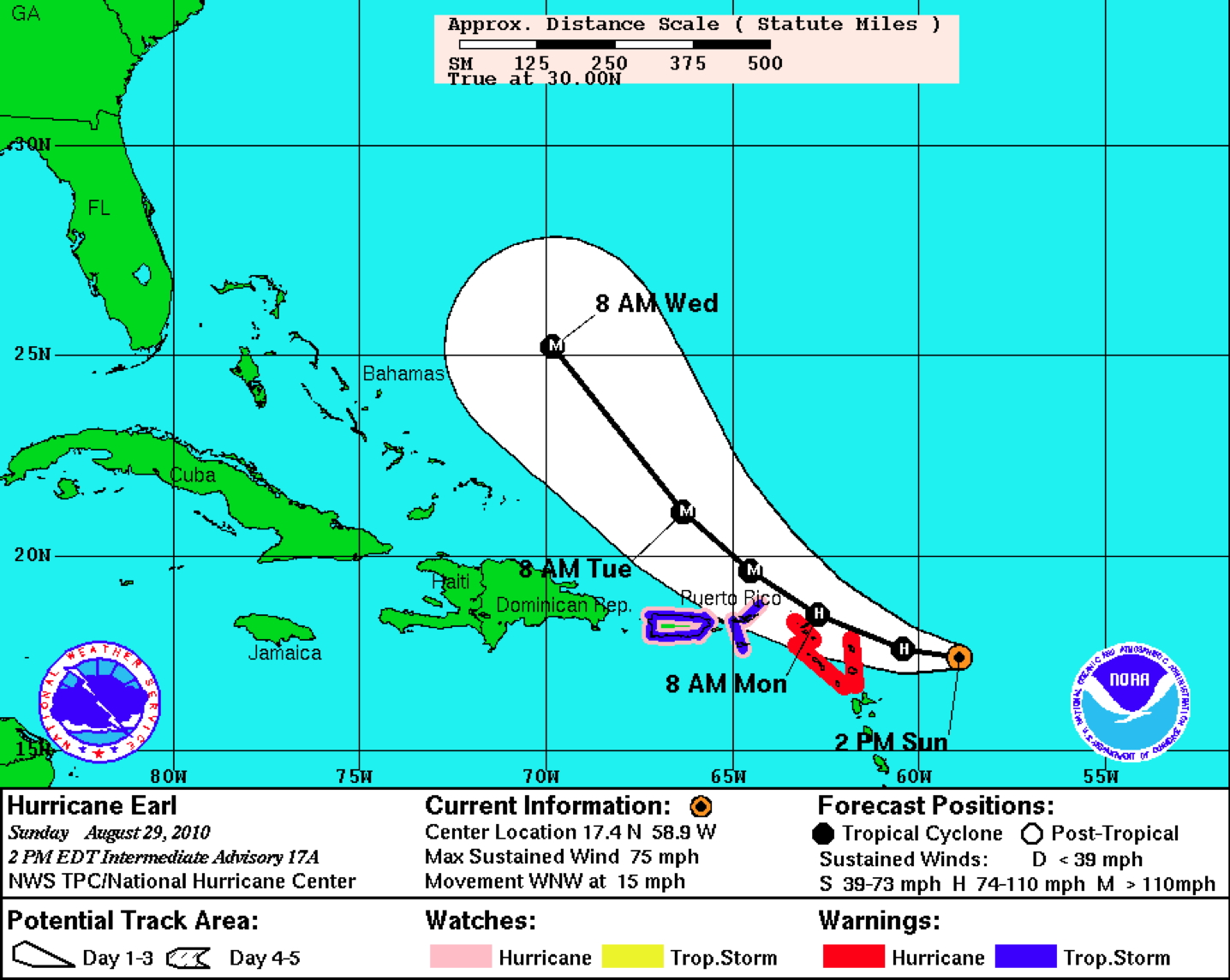
Figure 1. NHC track guidance for Hurricane Earl valid 18Z 29 August, 2010.
| Aircraft Commander | Mark Nelson |
| Co-pilot | Harris Halverson |
| Co-pilot | Justin Kibbey |
| Flight Engineer | Ken Heystek |
| Flight Engineer | Greg Bast |
| Navigator | Chris Sloan |
| Flight Director | Ian Sears |
| Flight Director | Paul Flaherty |
| Data Technician | Dana Naeher |
| Electronics Technician | Damon Sans Souci |
| Electronics Technician | Bobby Peek |
| Electronics Technician | Mike Mascaro |
| Lead Scientist | Joe Cione |
| Radar Scientist | Shirley Muriilo |
| Dropsonde Scientist | Paul Leighton |
| Guest Scientist | Jason Dvorsky (UMass) |
| Guest Scientist | Joe Sapp (UMass) |
| Guest Scientist | Zorana Jelenak (NESDIS) |
|
|
Mission Plan :
NOAA 43RF will fly an Tail Doppler Radar mission in to of Hurricane Earl northwest of Barbados. The P-3 will leave Barbados at 2000 UTC and will recover back there by 0400 UTC.
Mission Summary :
| Take off | Landing
| Barbados | 29/19:39 UTC
| Barbados | 30/02:21 UTC
| | ||
Prior to the flight, the system of interest was still classified by NHC as category 1 (65kt) hurricane. NHC track guidance is shown in Figure 1.

At takeoff (1938 UTC 29 August), Hurricane Earl had an estimated maximum intensity of 65kt and a estimated center of circulation near 17.4° 58.9°W. This would be N43's first Hurricane mission into Earl. Similar to the mission conducted by N43 on 8/28, the planned mission for the 29th was a dual-rotated, 105 nm, 4 penetration, figure 4 pattern. The flight track geometry for this mission is given in Figure 2.
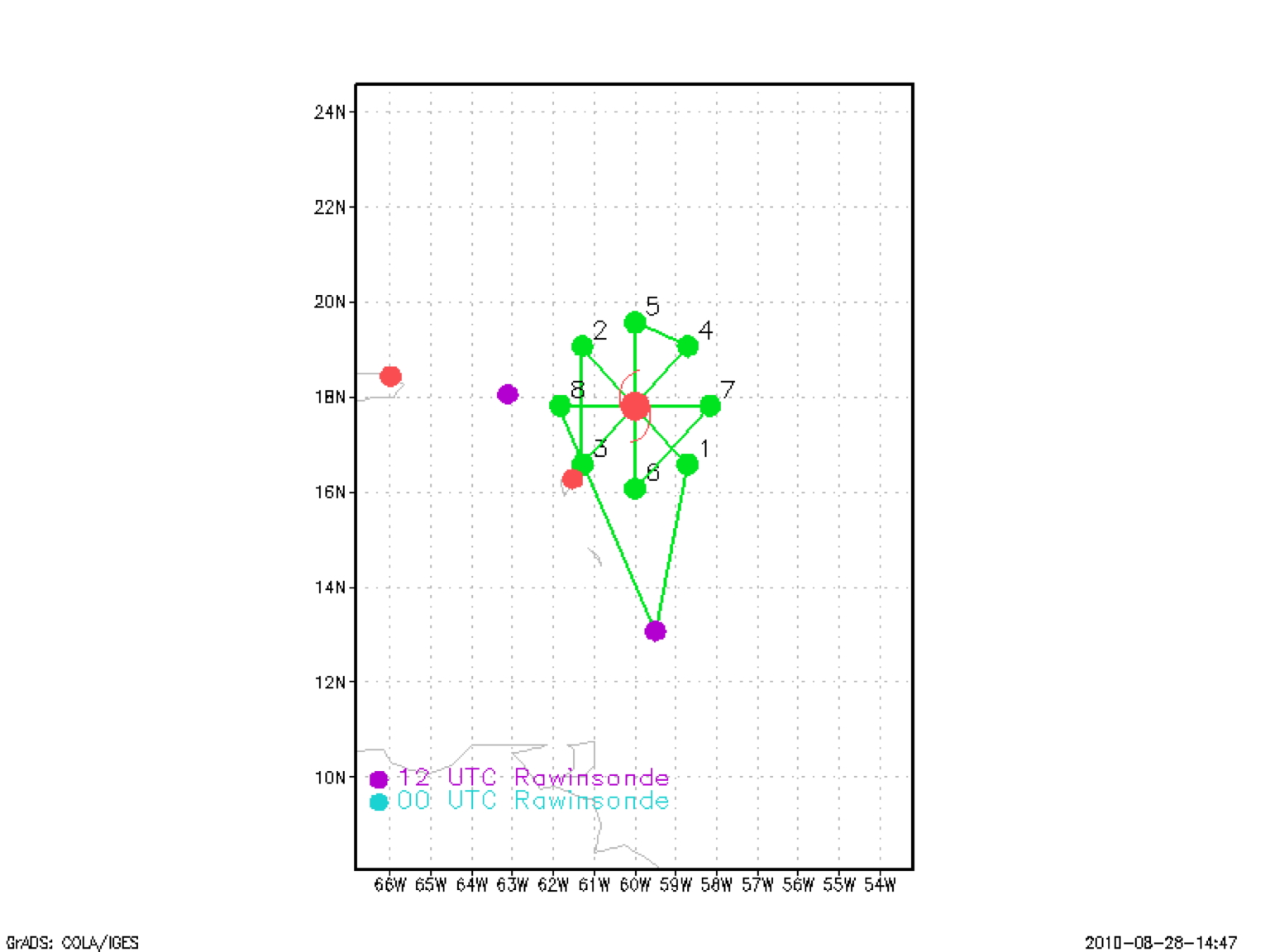
Since this was a combination TDR and Ocean Winds experiment, the experiment was conducted at 12kft (radar) for the first figure 4 at which point the aircraft descended to 7Kft (radar) and remained there for the duration of the mission. Total flight time was 6 hours and 43 minutes. Follow-on missions for 8/30 were planned for N43. In addition, coordinated 8/30 0800 and 1700 follow-on missions were also planned for N42 and N49.
Mission Synopsis:
Prior to beginning our mission, it was of interest to assess the overall large scale environment in and around Earl as depicted by satellite (Figures 3a-c).
These images depict two regions of convective activity, one in the southern half of Earl and the other within the north eastern quadrant. Since these images are valid a few hours prior to when the N43 entered the storm it will be of interest to compare satellite depictions with structure obtained from quick look composite Doppler passes approximately valid between 21-01Z.
As previously mentioned, N43's (on-time) takeoff occurred at 1938Z. Ferry altitude was 13kft. As Figure 2 illustrates, The IP for NOAA 43 required a north heading in order to enter the storm from the south/south east. Since the storm was not yet a hurricane with associated organized convective structure, the plan was to repeat the plan from the 8/29 N43 mission whereby sondes were dropped at each 105nmi endpoint, then again at the 52.5 mile mid-point. Once through the center of circulation, the drop sequence was then reversed (i.e. mid point, endpoint). On the first and last legs through the system, eye/center fix sondes were also planned. In order to meet mission requirements for both experiments conducted on this flight, 12Kft (radar) altitude was maintained during the first figure 4 (TDR) and 7Kft (radar) was held during the final figure 4 (Ocean Winds). Also, in order to minimize interference between the TDR and Ocean Winds hardware, Doppler radar was run in 'wedge mode' when the aircraft was at lower altitude during the final figure 4 pass through the storm. During the fist figure 4 the TDR was run in "FAST" mode.
Once in the storm, it became clear that relatively dry core conditions found on the 28th had 'moistened up' a significant amount whereby a decent precipitation shield (including convective and stratiform elements) were more widely distributed on this flight. In addition it appeared that TS Earl was beginning to set up a proto-eyewall structure. As such, the mid-point GPS planned drops were switched to 'eyewall drops' instead. Generally speaking, the convective pattern was skewed towards the south/south east/eastern side of the storm, again suggesting that dry air was likely making its way into the core circulation form the north and west. Still, the amount of scatterers clearly had significantly increased over the past 24 hours. It was also evident that Earl was intensifying.
Despite Earl's ~15kt westerly track, peak SFMR surface winds were found on the east/back side of the storm (65kts). This was likely in response to the persistent convection apparent on that side of the storm at this time. Analyses of surface wind speed (Figure 4) and N43 1km Doppler-derived wind speed and direction (Figure 5a) are provided below. Also, the vertical extent of the storm circulation at this time was more evident at this time relative to similar 5km and 10km analysis from the previous N43 flight on 8/28 (Figure 5b, c).

MSLP, obtained from a GPS dropsonde, was ~969 mb for this mission (representing over a 20mb drop over a ~24h period). While not as evident as on flight 20100828I1, it was still apparent that some dry air was getting into the core circulation, especially on the northern and western portions of the storm. In fact, during much of the flight, it was precipitation-free on the north and northwest side.
Problems :
The radar, flight-level, SFMR, and dropsonde systems for the most part all worked well on this flight. Doppler analyses were conducted and successfully sent off the plane in real time. There were a few GPS sondes that did not get winds and had to be backed up and sent out. In addition, a couple of supplemental sondes were released in order to sample interesting convective features that were observed. Including backups, 20 (vs. the planned 18) GPS sondes were released. 8 on the 105nmi endpoints, 8 eyewall, 2 eye drops and 2 failures.
Joseph Cione
09/08/10
NetCDF | 1 second data | |
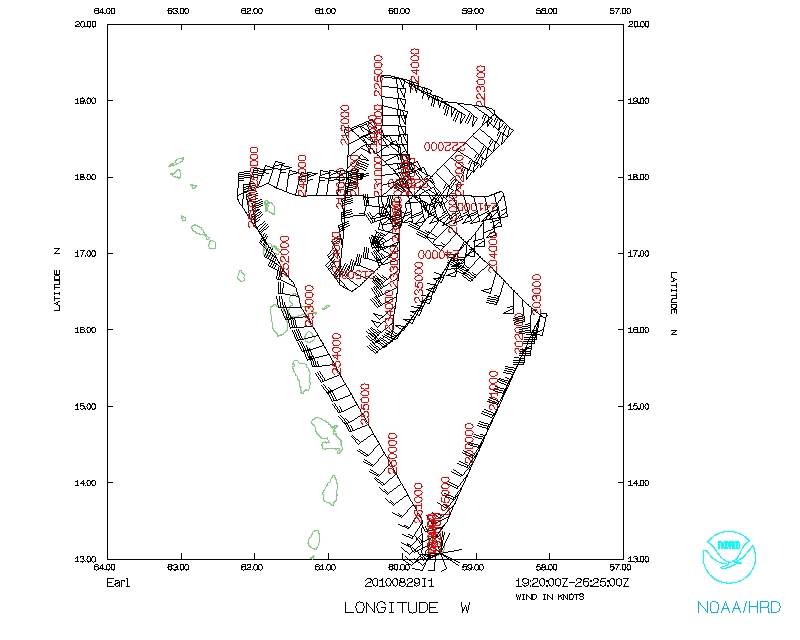 Flight track |
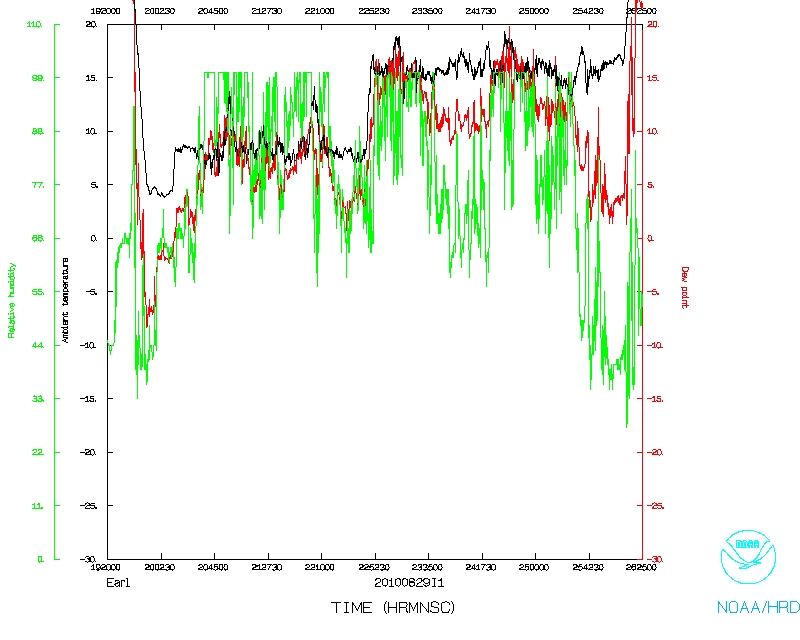 Temperature and Moisture |
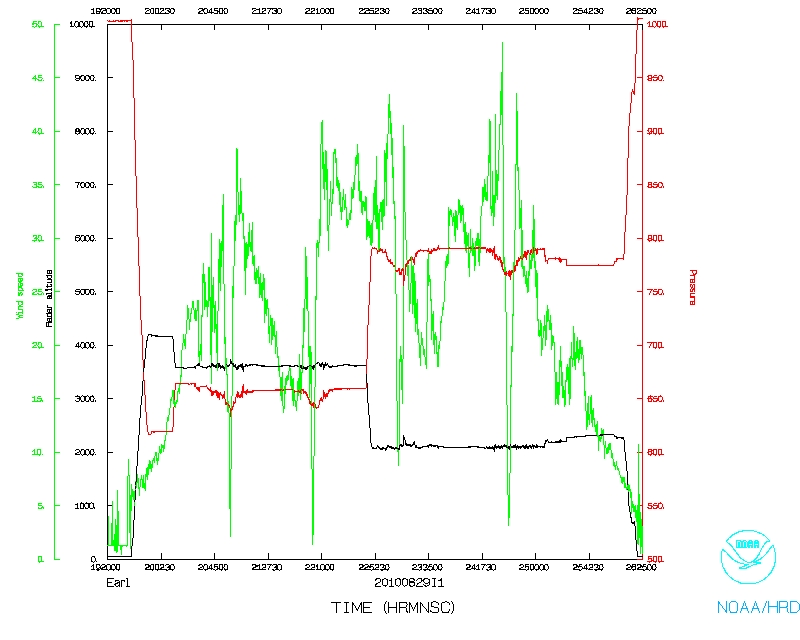 Wind and Atlitude |
Page last updated September 10, 2010
Return to Mission page.